Sound Advice: 5 Suggestions for Improving Clarinet Tone
by Paula Corley
Date Posted: October 24, 2018
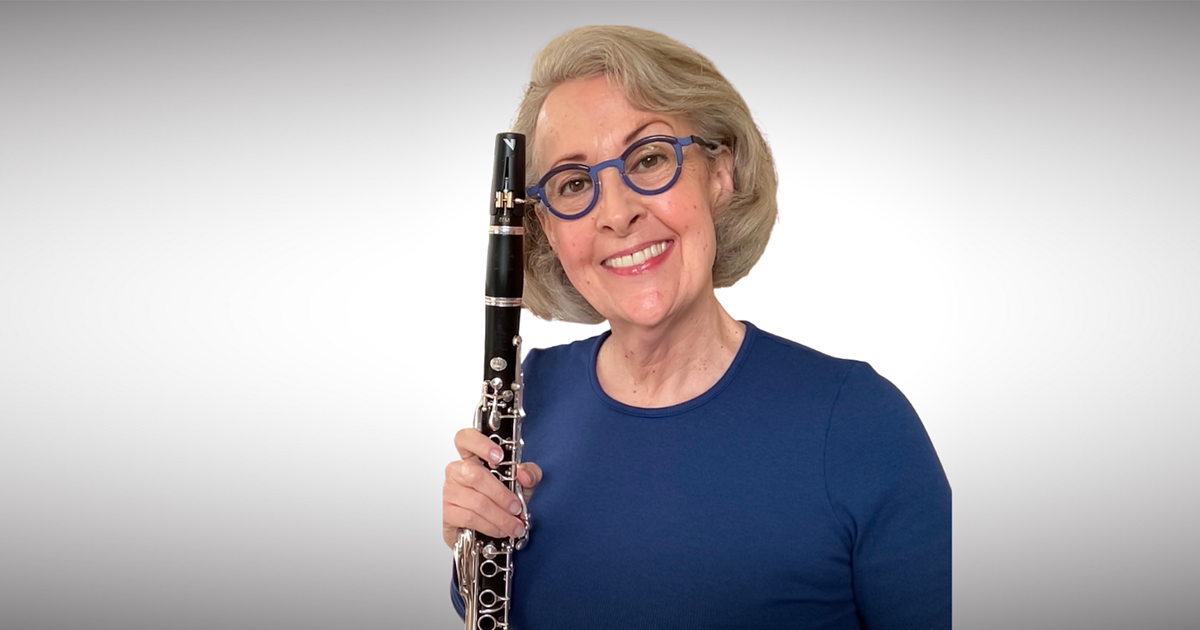
Vandoren and Buffet Crampon Artist, Pedagogy Chairman: International Clarinet Association, Texas Lutheran University Faculty
Poor tone quality – both slurred and articulated - tops the clarinet critique list for directors and judges. How do you fix it? Here are five suggestions to improve tone quality when slurring and articulating.
1. Focus the sound.
- Good clarinet tone has a defined center and core.
- Factors that affect focus: 1) air speed 2) tongue position and 3) grip.
- Slow air = flat, unsteady, unclear sound. Fast air = vibrant, steady, clear sound.
- Low tongue position (ah) = unfocused. High tongue position (ee) = focused.
- Weak grip (mouthpiece movement) = unfocused.
- Corners should squeeze in towards the mouthpiece. The bottom lip should be visible with slight amount rolled over the bottom teeth to cushion the reed.
- Instrument angle: find the sweet spot where the sound is most vibrant and full. Bell placement should be in the knee vicinity.
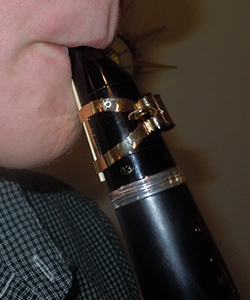
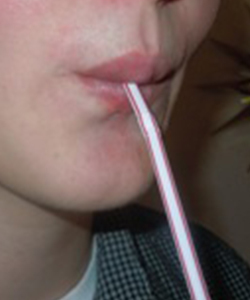
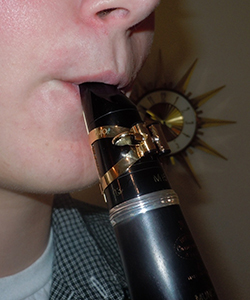
2. Develop tonal consistency through the full range of the clarinet.
- Register shifts work well for building good tone and control throughout the full range of the clarinet.
- “Air between the notes” is key for good tone quality.
- Registers should match in quality.
- Embouchure, air speed and voicing are the same for all registers.
Start the lower note with fast air. Make the note sound vibrant. Everything ‘grows’ from the bottom.
Before you add the register key, do a very slight crescendo just until the upper note speaks. However, do not allow students to “blow harder” in the middle register. This exercise should get rid of middle register ‘explosions’, not create them. Developing players often experience a delay or break between registers because the air speed is not consistently fast and steady. This slight crescendo accounts for the resistance change that occurs when the register key is added.
Once players can create a smooth connection between simple intervals, the chalumeau and clarion registers should begin to sound more homogenous. You may discover that some students are simply not creating a fast, steady air stream at all. The lower register is less resistant, especially if the student is playing on reeds that are too soft and on an inappropriate mouthpiece.
Register Shift Examples
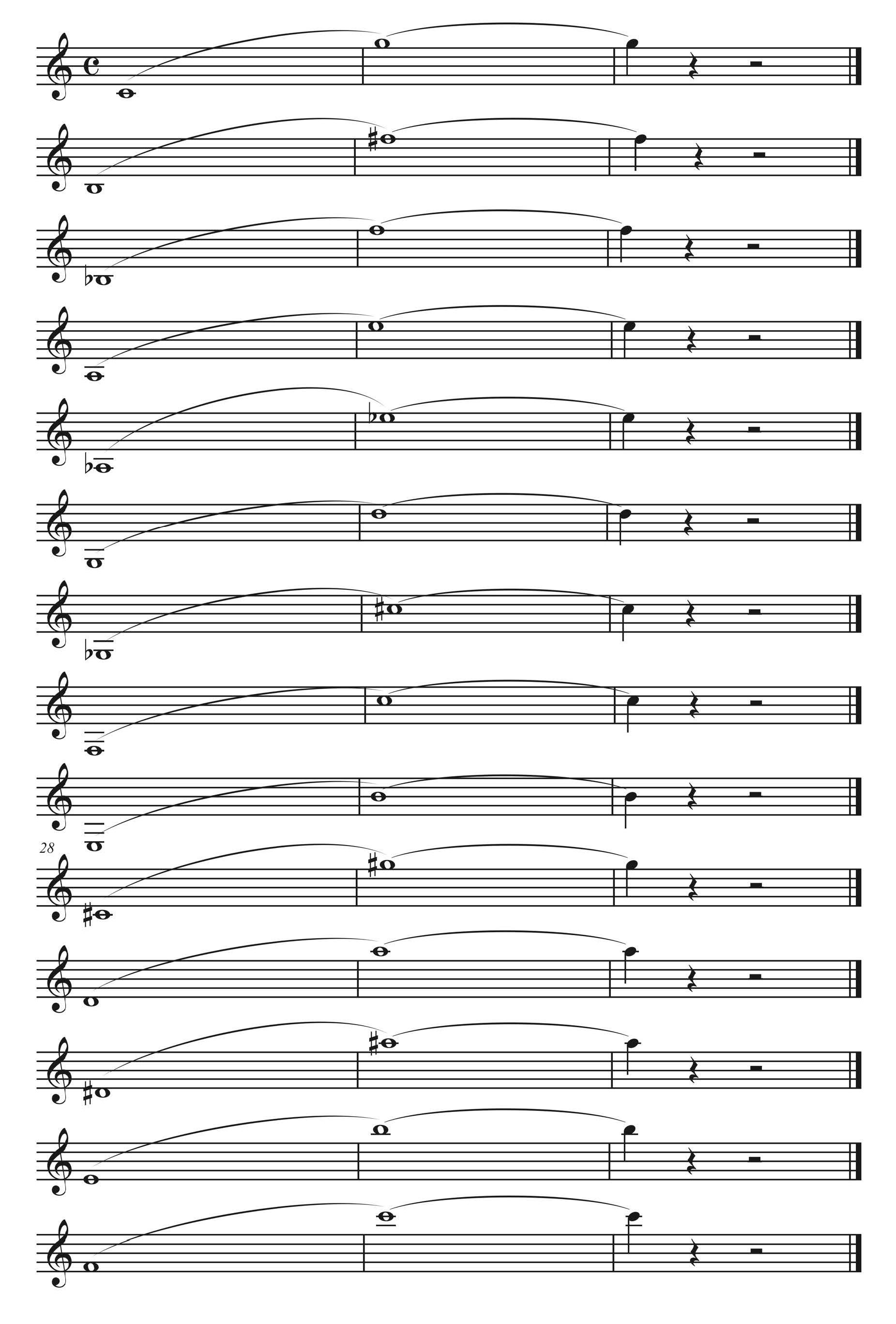
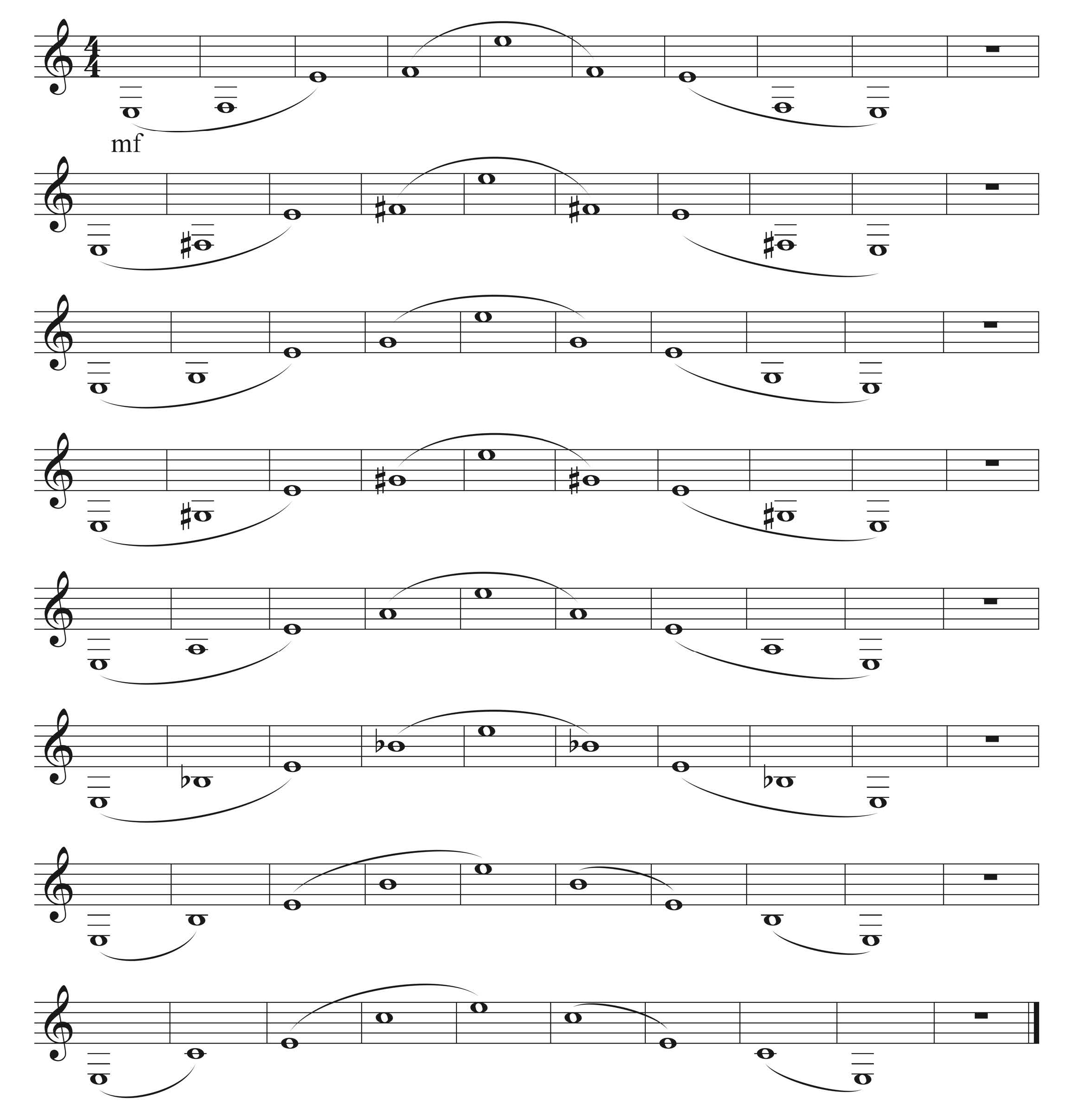
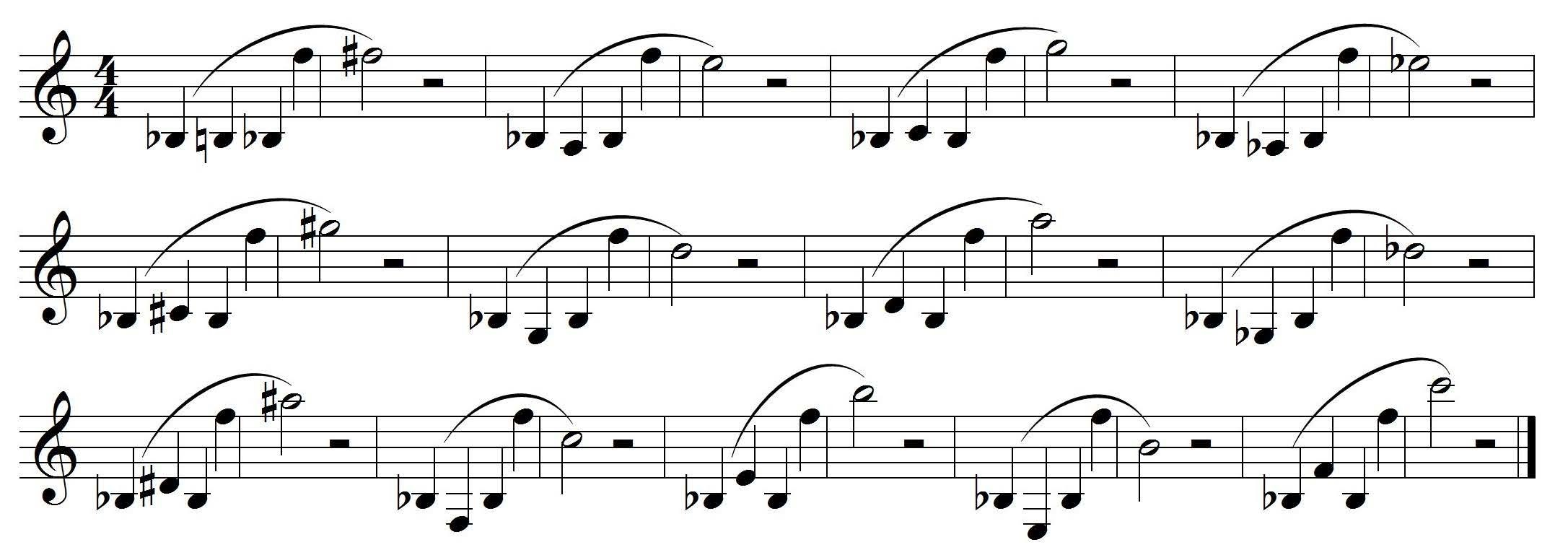
3. Utilize effective tuning practices.
Please do not try to tune a bad sound! Insist on a centered sound before attempting to tune.
- Reference pitch practice is essential.
• Flat pitch may be better treated with a mouthpiece or reed change. The clarinet does not “lip up” very easily.
• Sharp pitch: try finger shading and slight voicing changes to correct sharp pitch.
• Basic Interval exercises work well for developing good air support and pitch awareness.
Key of G is a good place to start. Adjust the barrel for open G.

Key of C - Third space C is usually sharp. Try adjusting the middle joint for C.

Concert A should be stable on most good quality clarinets that are 1) warmed-up properly and 2) are being played with a good mouthpiece and reed.

D major and Eb are sharp notes acoustically. These two notes are good examples of those that must be lowered by a voicing change. To lower pitch, try voicing with ooh (as in you) instead of ee. This slight change should pull embouchure corners in and reduce lip pressure which may lower pitch slightly.

G, A, B and C (below) can be sharp in pitch. Allow the right hand fingers to remain as close as possible to the open holes to help lower pitch. Second line G, G#, A and A# can be helped by actually pressing down right hand fingers. Some refer to this as resonance fingerings. There are many recommended combinations of resonance fingerings. Experiment to find a combination that works.

Rounds work well for developing part confidence and pitch awareness. Start with one on a part to build confidence in every player. Use a ‘drone’ pitch and allow time for students to discover “beats” (sharp or flat) at the fermatas. The goal should be adjusting successfully to other players within the ensemble - not just ‘stopping the dial.’
Rounds of Fun for Clarinet - G/e
for building part playing confidence and pitch center in the ensemble setting.
Interval Study
One breath per marked phrase.
Make each note sound "equal". No notes should "pop."
Play with a reference pitch tuner. Check the pitch tendency of tonic (scale note #1).
Air between the notes - no break in sound.
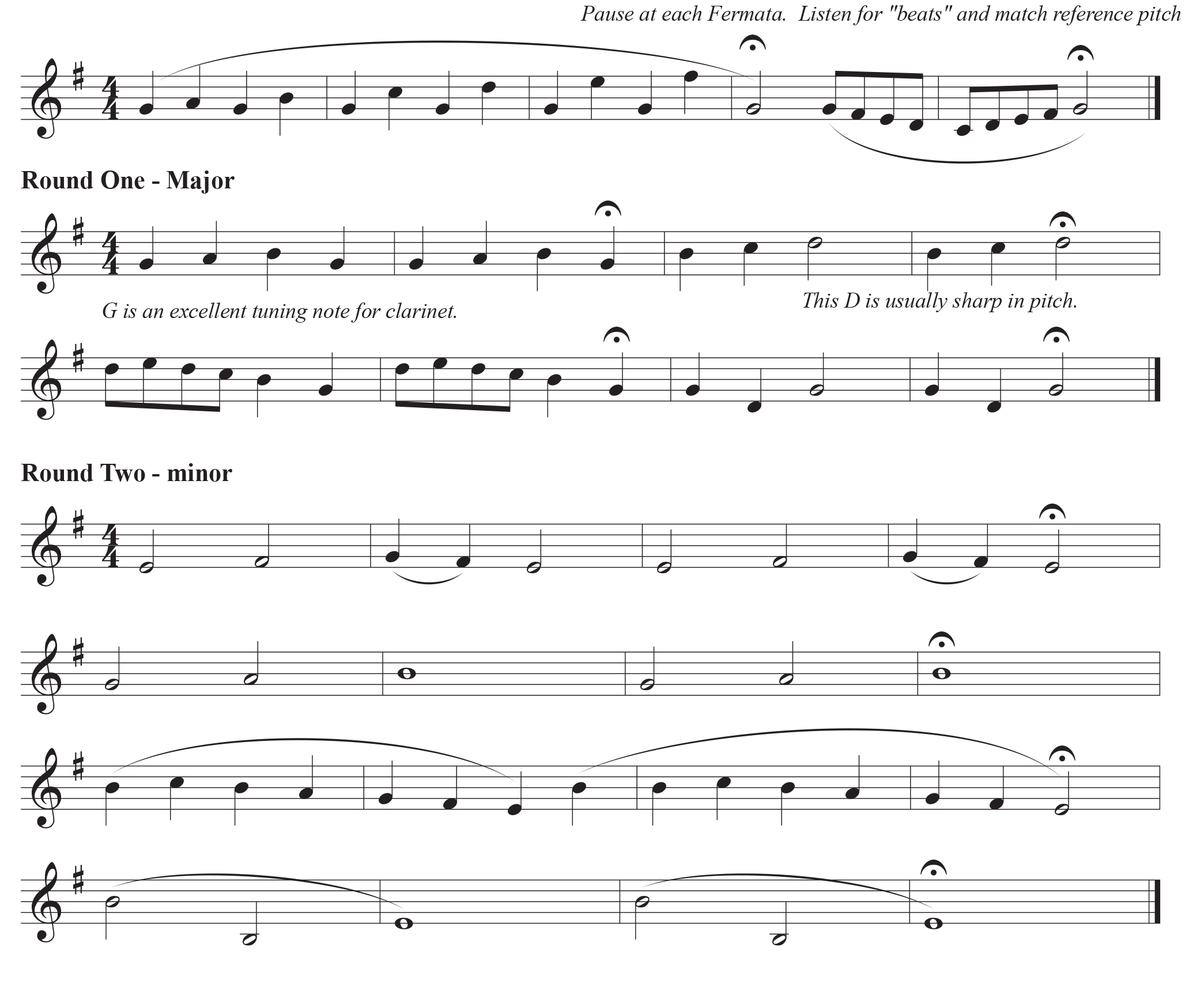
4. Maintain focus while articulating.
- Excessive tongue motion is the root cause of bad articulated clarinet tone.
- Minimize tongue motion by practicing at faster tempos first, then slow down.
- Use the “e” vowel for a focused sound.
- Tonguing ‘bursts’ can improve articulation consistency, speed, and note starts.
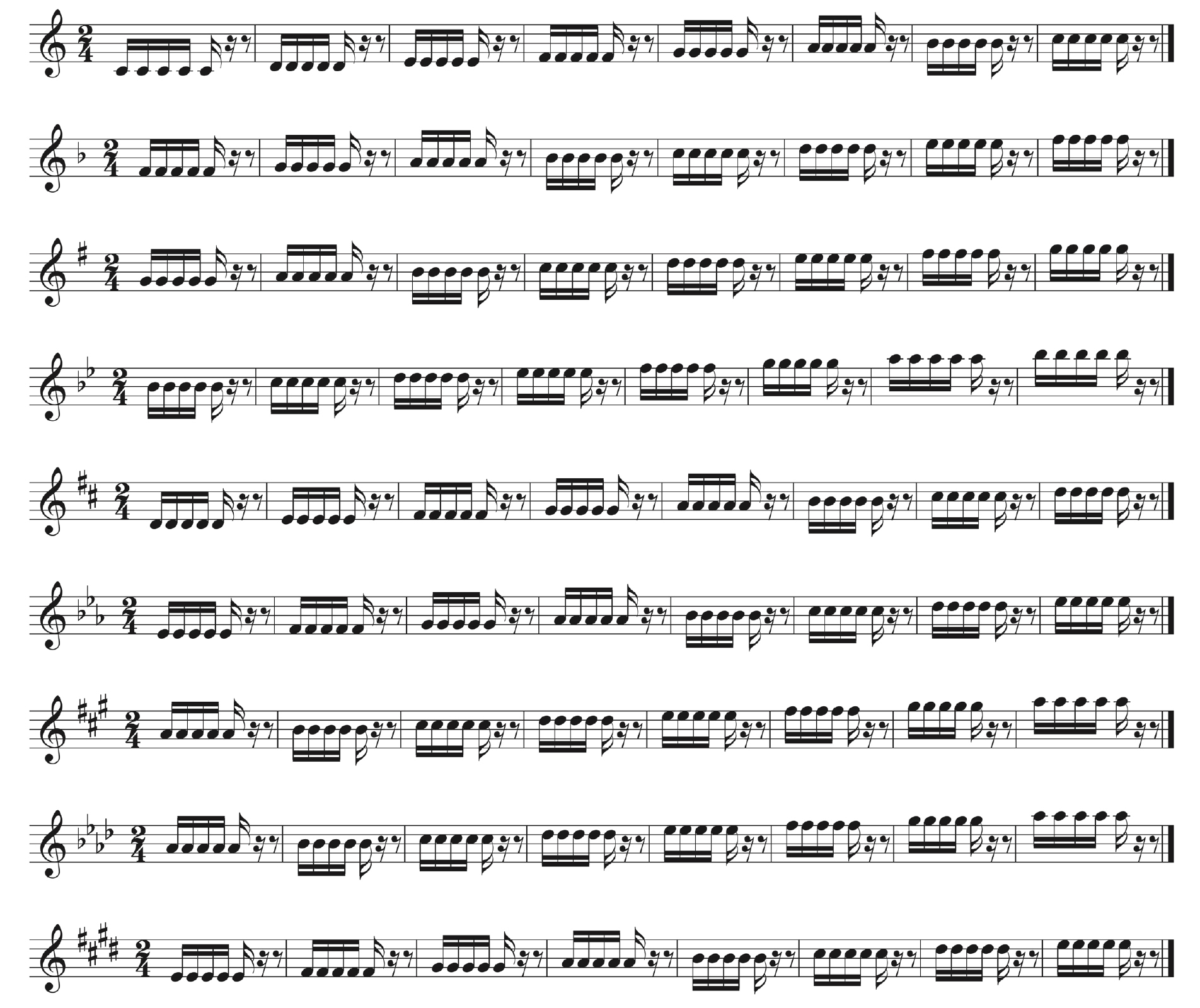
5. Choose mouthpieces, reeds and instruments deliberately.
What works for you may not work for your students. Investigate equipment by having students try different mouthpiece and reed combinations. Ask these questions: 1. Which one feels most
comfortable? 2. Which one sounds the best? 3. Does the equipment choice make tuning better or worse? Will you have to make another change (ex. Barrel) to play in tune?
- Reeds and Mouthpieces affect clarinet tone quality and pitch more that the instrument itself.
- Too soft or worn out reeds create flat pitch and eliminate focus.
- Too hard reeds create sharp pitch and a covered sound.
- Improper reed strength for a mouthpiece can create flat pitch, sharp pitch, a covered or unfocused sound.
- Instrument quality affects tuning. Not all instruments have a good ‘scale'.
- Barrel and bell substitutions change tone quality and tuning.
Download PDF here.

About the Author
Paula Corley is the Education Advisor for Buffet Crampon North America. She has 33+ years of teaching experience from middle school to university level. Most recently Paula served as the clarinet instructor at Texas Lutheran University where she hosted ‘clariNETWORKS’ – a very popular annual event for clarinetists of all ages and band directors. She is also a chamber music judge for Music for All's National Chamber Music Festival and served as the Pedagogy Chair for the International Clarinet Association from 2018-2020. Most know her as the ‘mayor’ of Clarinet City, a teaching website for all ages and stages of clarinet playing.
Originally from Mississippi, Paula grew up without access to clarinet lessons which sparked a lifelong interest in research for developing players. She is a graduate of Mississippi State University (BME) where she was named Alumnus of the Year in 2012-13 and Southern Methodist University (MM) where she worked with the legendary Howard Dunn. Paula taught in Plano, Texas ISD for many years before moving to Asheville, NC where she served as principal clarinet in the Asheville Lyric Opera and on the faculty at Mars Hill University (NC).
Author of So You Want to Play the Clarinet and The Break (Southern/Hal Leonard), Paula has performed and presented at music conferences throughout the US since 1998. She is a performing artist and clinician for Vandoren and for Buffet Crampon and her articles have appeared in THE CLARINET, Vandoren WAVE, The Texas Bandmasters Review, and The Instrumentalist. A new series of her arrangements for clarinet can be found at Hal Leonard. She also has two recorded works for clarinet: Unfamiliar Territory by Michael Markowski and Road Trip for clarinet quintet by Clifton Jones. Visit clarinetcity.com.
Subscribe to the We Are Vandoren E-newsletter (WAVE) to receive 4 weekly articles for Performers, Students, and Educators